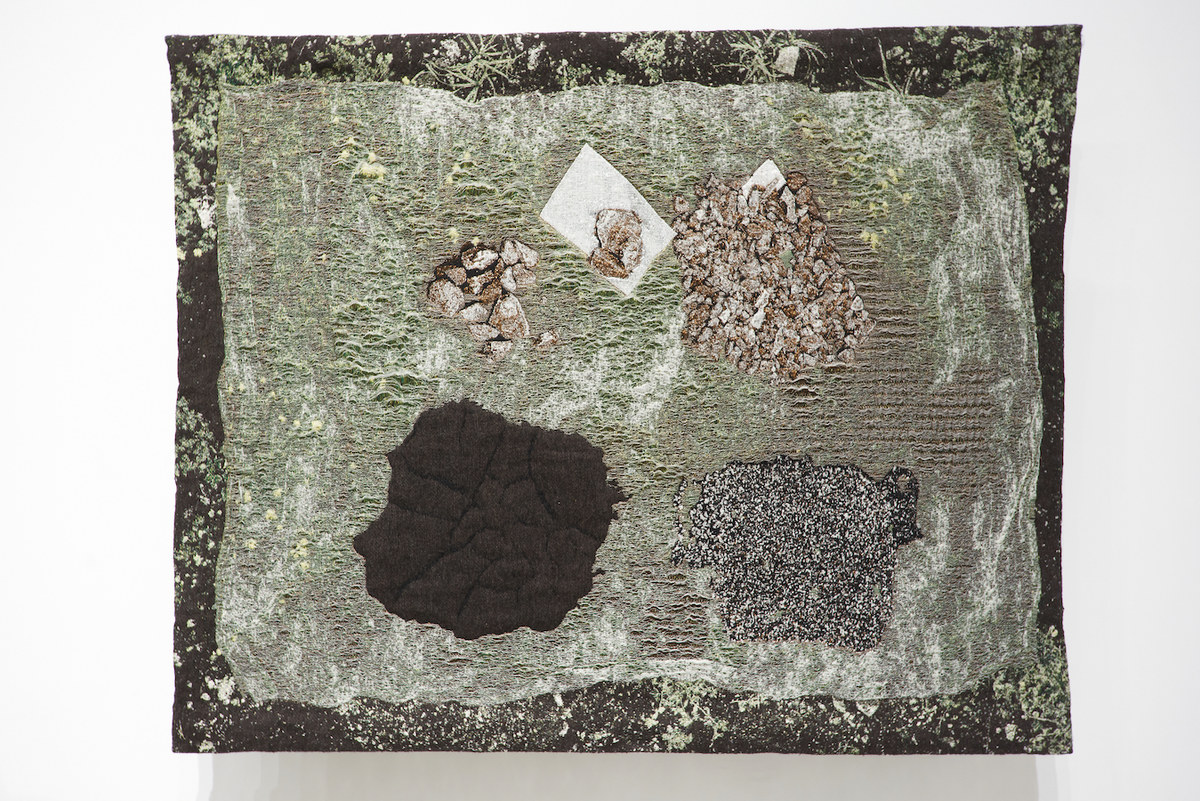DUBAI: Moments before the Beirut Port explosion ripped through the city on 4 August 2020, the artist and filmmaker Joana Hadjithomas was sitting in a café in the Lebanese capital’s Gemmayze neighborhood. Located not far from the studio that she shares with her husband, the artist and director Khalil Joreige, she was with a friend when they suddenly heard an unusual sound. Having grown up during the Lebanese Civil War, she instinctively dived beneath the table.
“I didn’t know what had happened, but my instinct for danger is very strong,” she says. Moments later an estimated 2,750 tons of ammonium nitrate stored in the port’s Hangar 12 exploded, causing 218 deaths, 7,000 injuries and displacing more than 300,000 people. Caught in one of the areas closest to the blast, the couple’s studio was destroyed. Hadjithomas suffered minor injuries, but that was nothing compared with the loss of friends and colleagues.

The couple’s studio was destroyed. (Supplied)
Among the items destroyed in their studio were a series of photographs depicting archaeological sieves. Designed to reveal any item of historical or geological significance, the sieves contained everything from seeds to traces of baked clay. Their documentation formed part of an ongoing project called “Unconformities,” which began with the artists collecting a series of core samples from construction sites in Athens, Paris and Beirut. This fed into their fascination with history, its representation, and the constructions of the imaginary.
Saddened by the loss of the photographs and seeking a way to restore what had been destroyed, they turned to tapestry. Working with weavers and various types of yarn, they embraced this traditional craft as a form of therapy.

Among the items destroyed in their studio were a series of photographs depicting archaeological sieves. (Supplied)
“Tapestry requires a lot of time and it’s like something is being repaired,” says Hadjithomas, who had small shards of glass embedded in her back following the blast. “You repair something that has been destroyed, and to do that you have to experiment with yarn, with colors, with texture, and so it takes time. And this time restores something deep within you. I needed that.
“I was very close to Etel Adnan (the acclaimed Lebanese poet and visual artist, who died in November) and at the end of her life she was always telling me, ‘You should do tapestries.’ She wanted my daughter to do them, too, and I was always thinking: ‘My daughter? Why?’ And then later I understood what she was trying to say. That it would give me strength.”

Their documentation formed part of an ongoing project called “Unconformities.” (Supplied)
Three of these new tapestries form part of “Messages with(out) a code,” an exhibition of the duo’s work at The Third Line in Dubai’s Alserkal Avenue. Also included in the exhibition is a single core sample in experimental resin, a series of digital photographs, works on paper, and the short film “Palimpsests,” which was shot at several sites across Beirut and documents the process of core drilling. The opening of the exhibition in March coincided with a three-week retrospective of the couple’s cinematic work, the focal point of which was the exclusive GCC release of the film “Memory Box.”
“When you stand back it doesn’t look like a tapestry, does it?” Hadjithomas asks on the day of the exhibition’s opening. “Maybe it’s a picture, an image. We really wanted them to not be traditional, so there is a transparency in this one for example,” she says, moving to another part of the gallery. “This was a gauze that (the archaeologist) would use and a little flower would appear underneath it. So this was one of the obsessions we had. There were several layers that you could feel immediately in the tapestries.”

“Unconformities” began with the artists collecting a series of core samples from construction sites in Athens, Paris and Beirut. (Supplied)
Their interest in core samples and archaeology stems from a friend, Philippe Fayad, a civil engineer who invited the couple to observe his work on construction sites. “When we went, we understood that while he was drilling he was extracting what is underneath our feet: traces and remains of all those civilizations and epochs.”
It was the beginning of an obsession. They took photographs without understanding what they were seeing, visited an increasing number of sites across Beirut, and eventually became friends with Hadi Choueiri, an archaeologist in charge of a large construction site opposite their home. It was he who would help them decipher everything they had photographed.
“We started working on this idea that we can talk about history and what is underneath our feet. By doing that you have another relationship with history, because you understand that history is cycles, and those cycles are not linear history. It’s not layered, it’s mixed,” Hadjithomas explains. “Sometimes civilizations used the same stones to build something else, so you understand this idea of cycles: the cycle of catastrophe and regeneration. It’s those moments where there’s the ending of something and the beginning of something else.”












